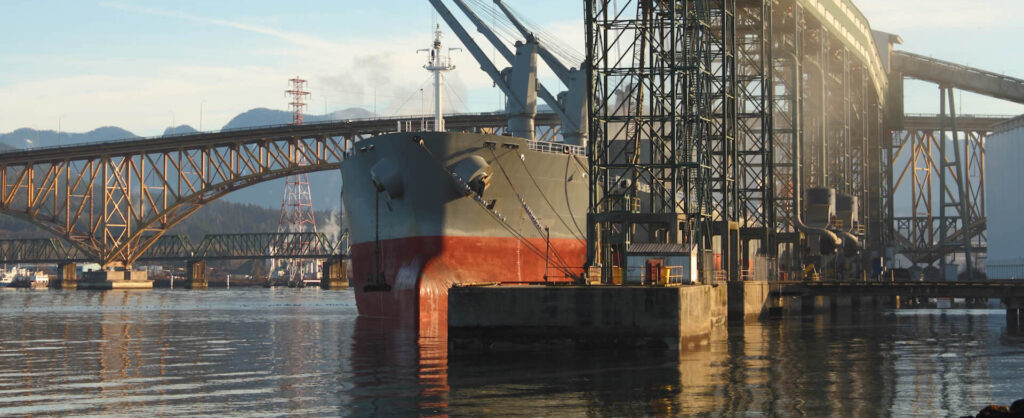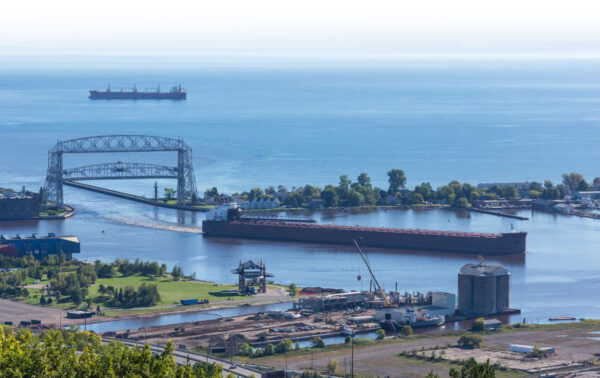Canada is fortunate to have a vast wealth of natural resources which contribute significantly to the nation’s economy. It is perhaps no surprise, then, that the majority of Canada’s marine exports and imports, by volume, are natural resource-based bulk commodities.
Canada’s top marine exports, by volume, are:
- coal
- iron ore
- crude oil
- wheat
- fuel oil
Canada’s top marine imports, by volume, are:
- crude oil
- coal
- iron ore
- fuel oil
Why are Canada’s top marine exports and imports the same commodities?
Canada differs from most other countries in that some of the same bulk commodities are among both its top marine exports and imports. This trade pattern can be explained by Canada’s large size, geographic location of resources, infrastructure, and transport costs.
Take Canada’s trade patterns in crude oil as an example. The vast majority of maritime trade in crude oil occurs in Atlantic Canada despite the concentration of crude oil production in Alberta. This is because most crude oil exported from Alberta is transported by pipeline from Alberta to the United States whereas most crude oil exported from Atlantic Canada is exported overseas by ship. In fact, 89% of Canada’s marine crude oil exports originate in and are almost exclusively shipped from Atlantic Canada.
Similarly, the vast majority of crude oil Canada imports (96%) arrives in Atlantic Canada by ship because transportation costs for foreign crude from Africa, the Middle East and/or Europe to Atlantic Canada are lower than transportation costs for Canadian crude from Alberta or Saskatchewan to Atlantic Canada.
For similar reasons, coal and iron ore are both exported to Asia from Western Canada and imported to Atlantic Canada from the United States.
Learn more about Canada’s maritime trade, including Canada’s top marine imports and exports from our recent research reports:
- The Value of Commercial Marine Shipping to Canada
- Commercial Marine Shipping Accidents: Understanding the Risks in Canada
#clearfacts #maritimenation



